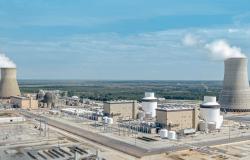He free dollar It maintains the upward trend in the final stretch of June and everything indicates that for the second consecutive month it will consolidate an increase greater than inflation. The currency, which was offered this Wednesday to a record price of $1,380accumulated a gain of 155 pesos or 12.7% in June, after having increased more than 17% during May.
However, the free dollar was not a convenient savings alternative so far in 2024: so far it has risen 355 pesos or 34.5%, against an inflation that in the first half of the year would be around 80 percent. In this sense, economists base their analyzes and projections on the recent rise and the trend that awaits the rest of the year.
Hamilcar Collante, economist at CeSur (Center for Economic Studies of the South) considered that “Argentina has its own process. After the devaluation (in December), the crawling and the financial dollars had been left a little behind. I think what triggered the rise in financial dollars was the interest rate, but now I think it began to show the limit of the scheme more than anything in the exchange rate. We had a large accumulation of reserves, but that is being reversed and in the coming months and the second half of the year the Central Bank will not be able to continue with this strong purchase of reserves. In reality, what can compensate for that, to meet the goals also with the IMF, should be some income of financial dollars, either from loans or because the money laundering is very successful, the RIGI itself (Large Investment Incentive Regime), which Bring dollars from abroad and allow the reserves not to fall. “That gives you a little more devaluation expectations.”
Gustavo Ber, economist at Estudio Ber, stated that “operators hope to evaluate possible initiatives that could contribute to improving the accumulation of reserves in view of the outlook of lower foreign exchange supply in the second half of the year. While waiting for clearer perspectives on the ‘roadmap’ towards an exit from the stocks in the future, operators continue to be more inclined towards dollarization, as reflected by the rearrangement of financial and free dollars, which have been consolidating for above $1,300, with a ‘gap’ already close to 50% that should not expand much further in order to avoid generating possible distortions and a deterioration in expectations.”
Aldo Abram, Executive Director of Libertad y Progreso, pointed out that “it has a combination of factors. The country’s risk begins to rise from the moment in which the treatment of the laws in Congress became very complicated, that is, there was little desire to change course in Congress, so if the course is not going to change , there is no reason for Argentina’s high risk perception to change. That is, economic and political directions are set and changed by laws, and those who can change them are those in Congress. And unfortunately it is not surprising – with what they have done so far – that the perception of risk has been growing. This affects for two reasons: it encourages the outflow of savings from Argentina, capital flight, and the other, it lowers the demand for pesos. Both things, since in addition to lowering the demand for pesos, the purchasing power of the peso decreases and is immediately reflected in the dollars. And the other thing, capital flight, is done through dollars, so it also helps the dollars rise.”
In this regard, Amílcar Collante stressed that “the Bases Law has not yet been released, but until that is implemented, between laundering and some dollars begin to enter that at least go to deposits and there is a slightly more important level of reserves, There may be a dynamic with a Central Bank losing reserves – since what was not managed to accumulate in the first semester, can no longer be accumulated – brings a bit of uncertainty. We also have to make political noise with the IMF, whose negotiations became quite tense regarding the scheme that Milei wants with respect to what the IMF wants more than anything in the exchange scheme. If the IMF contributes dollars – it marked the field well in this last report – what type of currency competition does it want to go into and that collides with the endogenous dollarization that Milei proposed, so that also brought a bit of uncertainty about how it will go. to resolve that issue, because undoubtedly to get out of the trap, that targeted negotiation is needed and there was some brake in that aspect.”
Aldo Abram expressed that “combined with what in my opinion was the untimely drop in the interest rate, which made it unprofitable to remain in the Argentine risk, it also contributed to the rise of parallel dollars in two ways, because if it is not profitable to remain In savings in pesos, capital escapes through dollars – another thing that puts pressure on the dollar to rise – and second, what has been happening is that since it is not profitable to have Passes (BCRA liabilities) the banks have decreased its demand and we are having a very strong increase in the Monetary Base. In other words, to the drop in demand we must now add that the Monetary Base has been increasing and all of this makes the loss of purchasing power of our currency very strong and that is being reflected in the values of the dollar. For this to be reversed, what is needed is for the level of uncertainty to drop. “As long as they approve something decent in Congress, but it will also be necessary to take out all the pesos that are left over in the market.”
“This last drop in interest rates, when combined with an increase in country risk due to what Congress is doing, made the program inconsistent, which aimed to make parallel dollars or the gap smaller, a matter of seeking exchange unification with a small jump in the official exchange rate. Unfortunately, as any exchange rate unification will be with an output that will be closer to parallel dollars, the reality is that the increase in the gap means that an exchange rate unification can no longer be expected without a strong jump from the official, unless they lower the parallels, which should be the objective,” argued the director of Libertad y Progreso.
For the financial analyst Ruben Ullúa, “what is happening is that the dollar is rising throughout the region. Today the real is marking a dollar of 5.50 and I think the market is appreciating that this can clearly mark a delay effect on the official exchange rate. Then the market hedges that situation. In any case, I don’t see much progress for the movement, but it is true that the market is seeing that the global context is not fully accommodated and that Argentina needs a little of that. The scenario of Brazil being so hit, with a dollar that is rising almost to its maximum in recent years, ultimately generates pressure on the local exchange rate and I think that the market in some way tries to warn of the risk that We are not entering into a much more marked exchange delay and that in some way an effect of pressure from the official could be generated. What it does is seek coverage for that situation. From the technical analysis side, I consider that the movement should not have such a long way to go and we should not be too far from an inflection point.”
Amílcar Collante also considered that the current reasons for the recent rise in alternative dollars include “the international context, because you have some currencies like the real that is depreciating strongly, as well as the Mexican peso. “There is a depreciation of Latin American currencies.”
There are a series of reasons that in recent weeks explained this escalation in prices of dollars that are negotiated outside official controls, as a “plus” in demand after the payment of the half bonus for registered employees, demand for foreign currency to cover card payments abroad, given the approach of the winter holidays, as well as inflation expectations that rise slightly.
In this regard, the latest June inflation expectations survey carried out by the UTDT (Universidad Torcuato Di Tella) showed a slight increase of two points compared to May, the first increase in this survey in five months. Specifically, the expected inflation for the next twelve months is +87% on average, versus the previous +85.1%.






